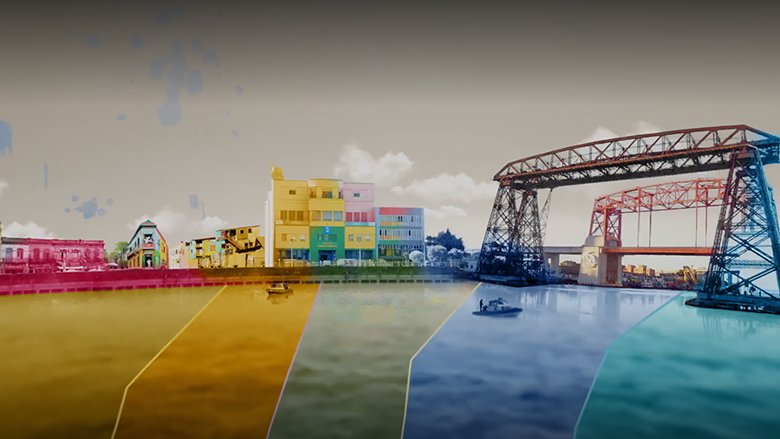Spanning 2,000 km2, the Matanza-Riachuelo basin is home to 10 percent of Argentina's population. Its 16 kilometers are recognized as one of the most contaminated waterways in Latin America.
The mega project that prevents dumping sewage waste into the river, the tannery park and its treatment plant, and household connections for residents in the basin, requiere 15 years of investments made by the Argentine government with World Bank financial and technical support. Today, Riachuelo river is becoming a transformed reality for those living in its basin.

The sanitation of a waterway that crosses highly populated areas is not an easy task. This is how it was done:
The sanitation plan
Back in 2006, the Supreme Court of Justice ordered the clean-up of the river and to improve the lives of its neighbors following a class-action lawsuit from residents affected by contamination. In 2009, the Matanza-Riachuelo Basin Authority (ACUMAR) presented the first Comprehensive Environmental Sanitation Plan (PISA). Based on this plan, the World Bank became a strategic long-term partner to finance key investments, with three loans totaling US$1.227 billion, the Bank's largest investment project in Latin America and the Caribbean.
PISA��s main objectives include sanitation works, industrial control, territorial planning and flood management. Among its main investments, a mega-work to avoid further basin contamination was planned.
The completion of the mega works
The ��Riachuelo system�� is a mega infrastructure project that expands the capacity to transport, treat, and dispose sewage effluents in Buenos Aires Metropolitan area. This project was carried out by the state water company AySA (Aguas y Saneamientos Argentinos) and comprise tunnels over 40 kilometers long.
The Riachuelo System is the first major expansion of the main sewer system in the Buenos Aires metropolitan area in over 70 years and will improve service delivery for more than 4.3 million people and, in the future, allow to incorporate 1.5 million inhabitants into the sewer network. The system is integrated by three large components: the mega collector, the pre-treatment plant and the outfall.
Now, the project has reached a key milestone. The components are finished, and the testing process of the system will begin. This new system will transport more than two million cubic liters of effluents per day, equivalent to seven full football stadiums.
More investments
The Matanza Riachuelo Basin Authority has also implemented other investments that are key to limiting river contamination. Among them, the World Bank supported the following two:
- A new tannery park. Historically, tanneries and other industries dumped their waste directly into the river. With the installation of a new Tannery Industrial Park in Lan��s together with a state-of-the-art treatment plant, small and medium-sized companies will now be able to carry out their production in a sustainable manner, thus avoiding contaminating the Riachuelo waters.
- More than 70,000 vulnerable people connected to new sewage systems. As part of the comprehensive project, 24,000 residents of the 21-24 slum in the City of Buenos Aires now have access to drinking water and to sewage and benefit from storm drainage investments. Home connections were expanded so that 50,000 people, from vulnerable neighborhoods, have access to drinking water in Ca?uelas and Marcos Paz, two neighborhoods in the Province of Buenos Aires.
The Matanza Riachuelo basin is reaching a historic milestone. Its transformation is real and allows for millions of residents to imagine a brighter and more inclusive horizon.
---
Other content:

